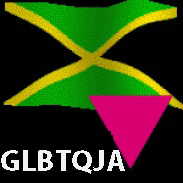

Intersex people are people who have physical differences of sex anatomy other than brain sex alone. Their anatomical differences might include genetic, hormonal or genital differences or differences in our reproductive parts.
Happy Intersex Awareness Day to the small number of persons here in Jamaica, however here is a post I hope both intersex and non intersex persons will find informative as we do not forget to include the “I” in LGBTI agitation wordwide.

The first Intersex Awareness Day (IAD) came about when the American intersex group named Hermaphrodites with Attitude (HWA) teamed up with American Trans group Trans Menace to picket an American Association of Paediatrics (AAP) conference in Boston on 26th October 1996.

Those picketing this event were outraged that the doctors attending the conference were recommending and conducting infant genital surgery on intersex kids in order to make them more “normal”. Some of those protesting had been subjected to those kinds of surgery when they were infants.
The central message of Intersex Awareness Day (IAD) is the de-medicalisation of natural variations in a person’s sex anatomy. Intersex is not a disease, a disorder, a medical “condition”. The use of stigmatising language such as this has led to poor mental health, marginalisation even invisibilisation, and exclusion from social institutions for Intersex people.
On this day we hope to make as many people as possible aware of what intersex is and that intersex people everywhere lack those most fundamental human rights, the right to autonomy over our own bodies, the right to a life without discrimination, the right to a life without shame and secrecy.
In short it is a call for our right to an equal place in society.
Intersex is difference in the same way that eye colour or right- or left-handedness are differences or human biological variations. As with handedness or sexual orientation, societies have, in the past, looked upon human variations through the lens of prejudice and then sought ways to “cure” or eliminate that variation.
At a fundamental level homophobic bigotry, intolerance and ancient superstitions underpin contemporary mistreatment of intersex people.
Intersex people are subjected to forced gendering and surgical alterations to our bodies to “disappear” our differences in a society that regards difference in sex anatomy as deeply suspicious.
More on What is intersex?
Intersex refers to a series of medical conditions in which a child’s genetic sex (chromosomes) and phenotypic sex (genital appearance) do not match, or are somehow different from the “standard” male or female. About one in 2,000 babies are born visibly intersexed, while some others are detected later. The current medical protocol calls for the surgical “reconstruction” of these different but healthy bodies to make them “normal,” but this practice has become increasingly controversial as adults who went through the treatment report being physically, emotionally, and sexually harmed by such procedures.
Beside stopping cosmetic genital surgeries, what are intersex activists working toward?
Surgery is just part of a larger pattern of how intersex children are treated; it is also important to stop shame, secrecy and isolation that are socially and medically imposed on children born with intersex conditions under the theory that the child is better off it they didn’t hear anything about it. Therefore, it’s not enough to simply stop the surgery; we need to replace it with social and psychological support as well as open and honest communication.
What’s so significant about October 26?
On October 26, 1996, intersex activists from Intersex Society of North America (carrying the sign “Hermaphrodites With Attitude”) and our allies from Transexual Menace held the first public intersex demonstration in Boston, where American Academy of Pediatrics was holding its annual conference. The action generated a lot of press coverage, and made it difficult for the medical community to continue to neglect our growing movement. That said, events related to Intersex Awareness Day can take place throughout October and does not necessarily have to be on the 26th.

Trans:
Self-identified gender does not match apparent sex at birth.
Some human rights protection. In NSW this is limited to “recognised transgender” or people thought to be “transgendered” – 36B Anti-Discrimination Act 1977 in Australia.
Centre).
